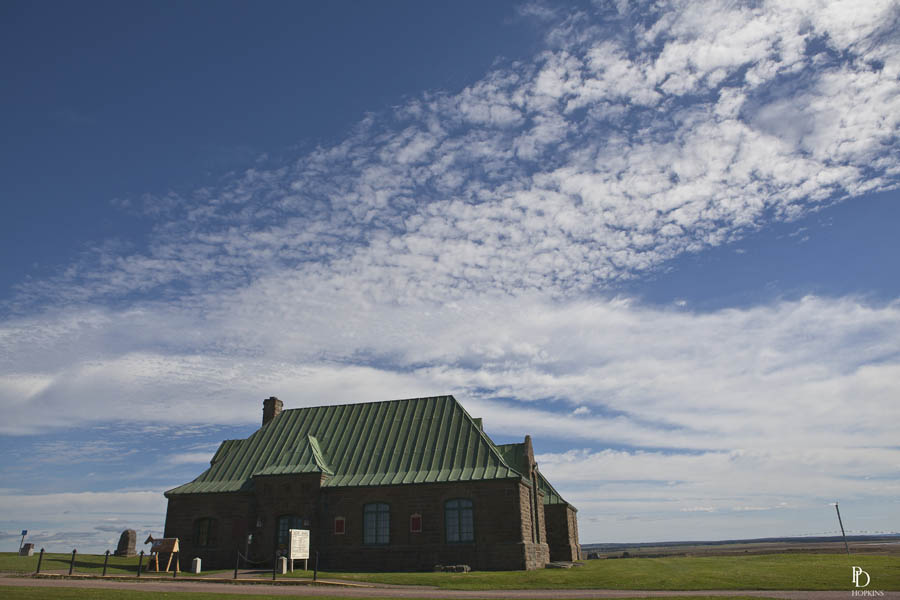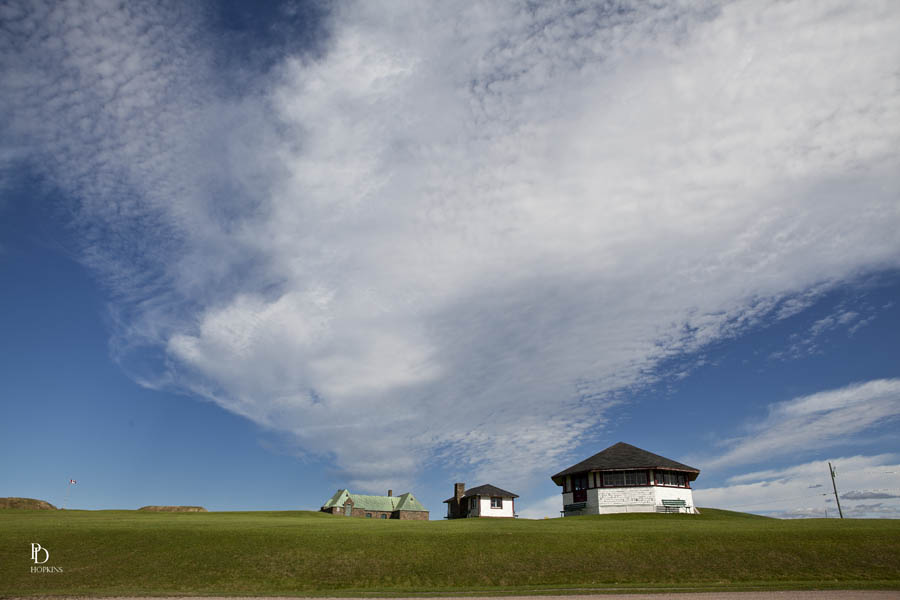Today we traveled from Grand Falls, New Brunswick to Halifax, Nova Scotia as part of this year’s trip to Atlantic Canada. Along the way, we stopped at Aulac, NB and ventured out to the Fort Beausejour site in search of a good location to photograph the Tantramar Marsh. I was less than successful, not being able to get sufficiently close to the marsh for good shots. However, I did get the opportunity to photograph some stunning blue skies with some spectacular cloud patterns. Let the following shots speak for themselves.


These clouds are known as cirrocumulus. A cirrocumulus is typically a large, white patch or tuft without a gray shadow. Each cloudlet appears no larger than a finger held at arms length. It occurs in patches or sheets along with other cirrocumulus. These often are organized in rows like other cumulus, but since they are so small,, cirrocumulus patches take on a finer appearance,sometimes also referred to colloquially as “herringbone” or “mackerel”. Properly, the term cirrocumulus refers to each cloud, but is typically also used to refer to an entire patch of cirrocumulus. When used in this way, each cirrocumulus element is referred to as a “cloudlet”. They are are high-altitude clouds that usually occur at an altitude of 5 km to 12 km.
These shots were taken without the use of any filters.
I did take a few shots of the marsh but didn’t really get close enough for anything that captured its size and nature. Tantramar is a large, saltwater marsh, located at the Isthmus of Chignecto which joins New Brunswick and Nova Scotia at the north end of the Bay of Fundy. I’ve seen some great photos online and I’d like to take the time someday to seek out those photo sites.

As usual beautiful photos. Love how you captured the clouds. Say hi to Matante